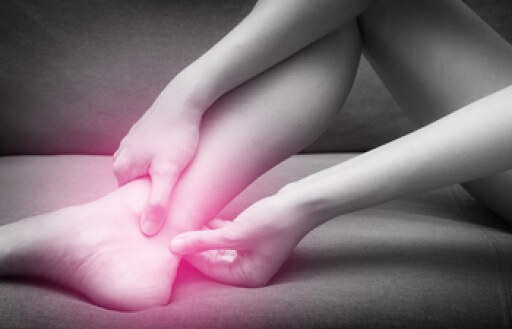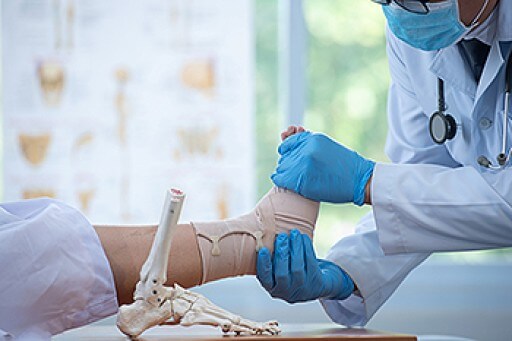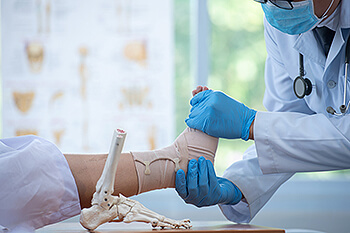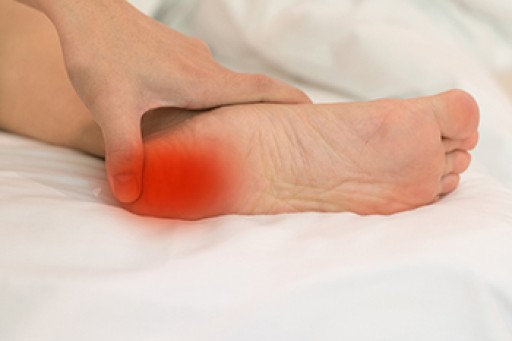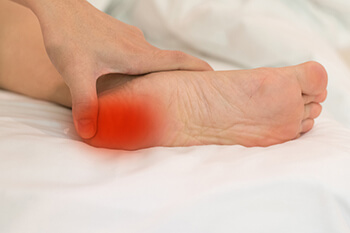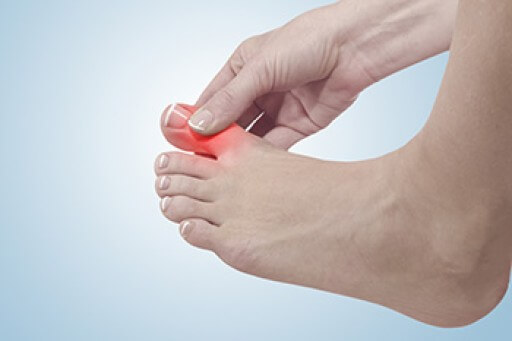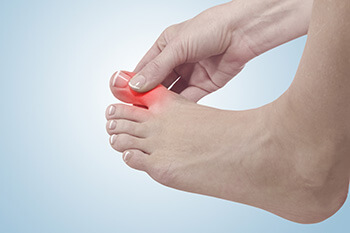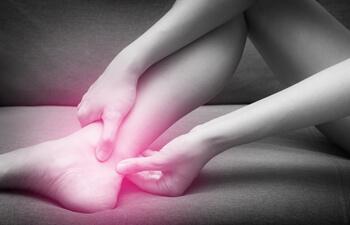
One of the most painful foot conditions is known as an Achilles tendon injury. It happens when the tendon that is located in the back of the ankle partially or completely tears. This may be more common in middle-aged people. This type of injury can be caused in people who have poor flexibility, or who engage in occasional sporting activities without properly warming up. The symptoms that often accompany an Achilles tendon injury can include hearing a pop at the time of the injury, and the affected foot may be red, swollen, and bruised. Patients have found mild relief when the foot is elevated, and this can help to diminish some of the swelling. The approximate healing time is several weeks, and this depends on how severe the injury is. Additional relief techniques can consist of wearing a boot or cast that can provide stability as the healing process occurs, and specific stretches and exercises are performed. If you have endured this type of injury, please schedule an appointment with a podiatrist who can guide you toward proper treatment methods, which may include surgery in severe cases.
Achilles tendon injuries need immediate attention to avoid future complications. If you have any concerns, contact Scott Samera, DPM of Samera / Foot + Ankle. Our doctor can provide the care you need to keep you pain-free and on your feet.
What Is the Achilles Tendon?
The Achilles tendon is a tendon that connects the lower leg muscles and calf to the heel of the foot. It is the strongest tendon in the human body and is essential for making movement possible. Because this tendon is such an integral part of the body, any injuries to it can create immense difficulties and should immediately be presented to a doctor.
What Are the Symptoms of an Achilles Tendon Injury?
There are various types of injuries that can affect the Achilles tendon. The two most common injuries are Achilles tendinitis and ruptures of the tendon.
Achilles Tendinitis Symptoms
- Inflammation
- Dull to severe pain
- Increased blood flow to the tendon
- Thickening of the tendon
Rupture Symptoms
- Extreme pain and swelling in the foot
- Total immobility
Treatment and Prevention
Achilles tendon injuries are diagnosed by a thorough physical evaluation, which can include an MRI. Treatment involves rest, physical therapy, and in some cases, surgery. However, various preventative measures can be taken to avoid these injuries, such as:
- Thorough stretching of the tendon before and after exercise
- Strengthening exercises like calf raises, squats, leg curls, leg extensions, leg raises, lunges, and leg presses
If you have any questions please feel free to contact our office located in Lake City and Branford, FL . We offer the newest diagnostic tools and technology to treat your foot and ankle needs.
